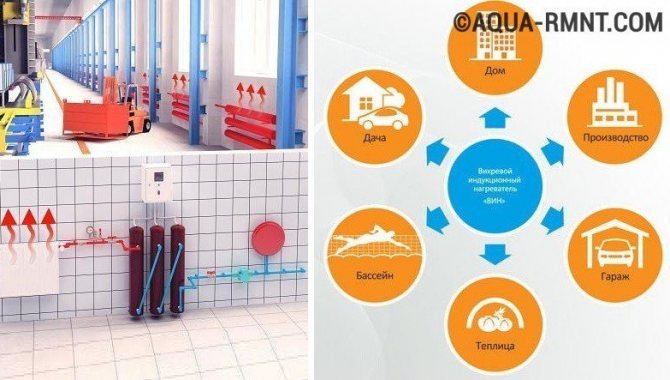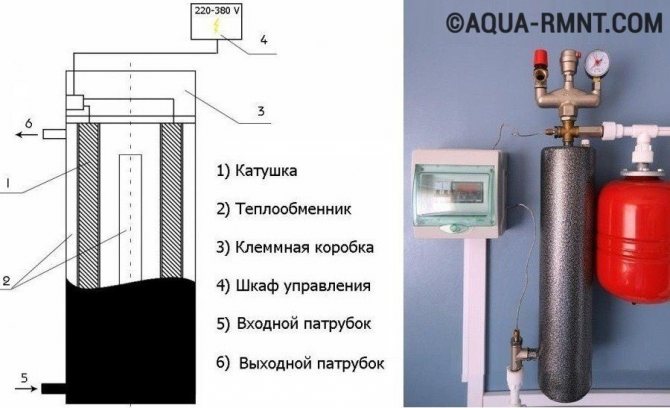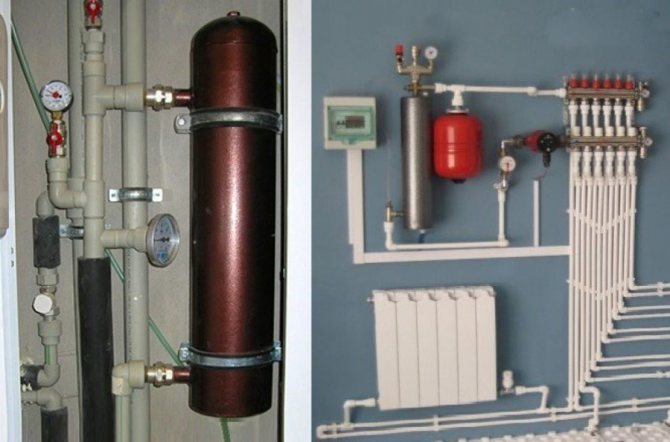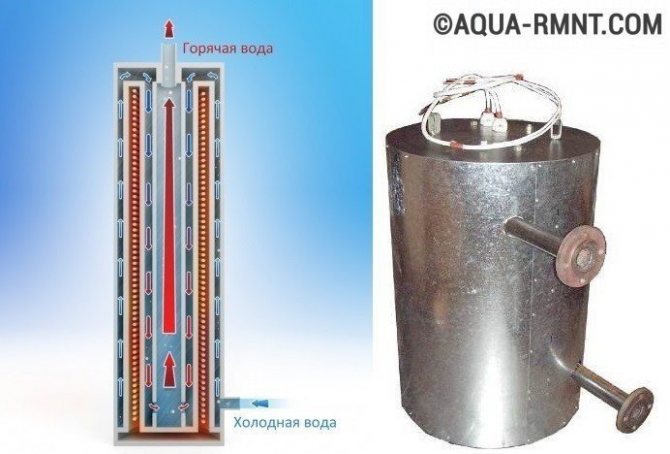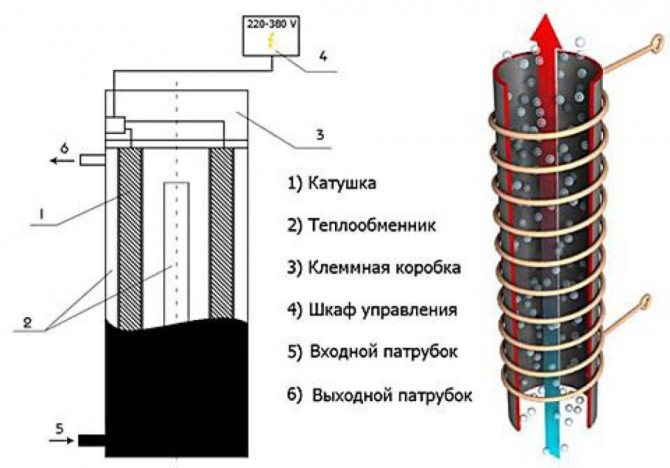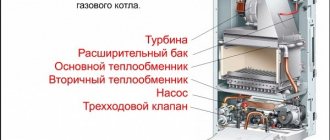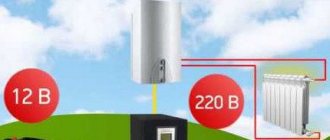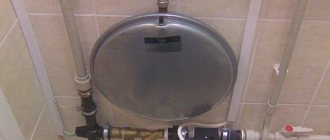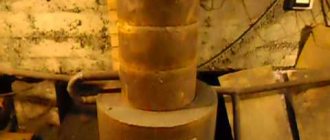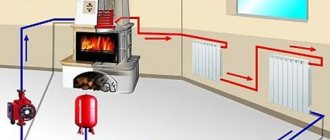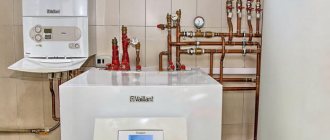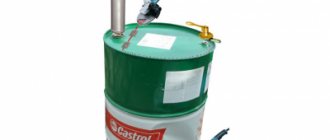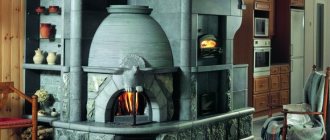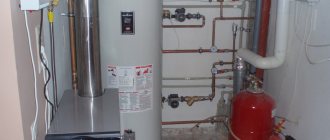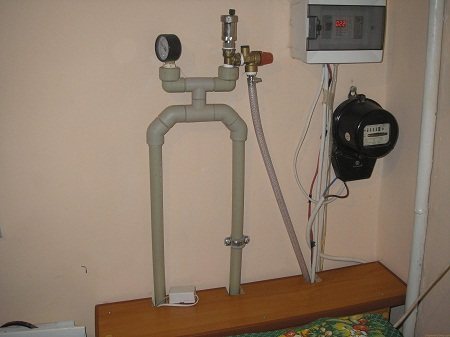
The induction heating boiler features good economy and long service life.
When choosing a boiler for heating a house, the owners are guided, first of all, by what source of heating is available for the room. Gas is the cheapest fuel, but settlements are far from supplied. Electricity is the most common, but not the cheapest. An induction heating boiler produces a fairly high efficiency, with less electricity consumption compared to other electrical options.
The principle of operation of an induction boiler
The basis of the operating principle of the boiler is the creation of thermal energy from electrical energy. The effect of electromagnetic induction is as follows - through a coil wrapped in wire, we pass a current, an electromagnetic field arises around this winding. A metal core placed in the coil (which has the property of being attracted by a magnet) will start to heat up quickly.
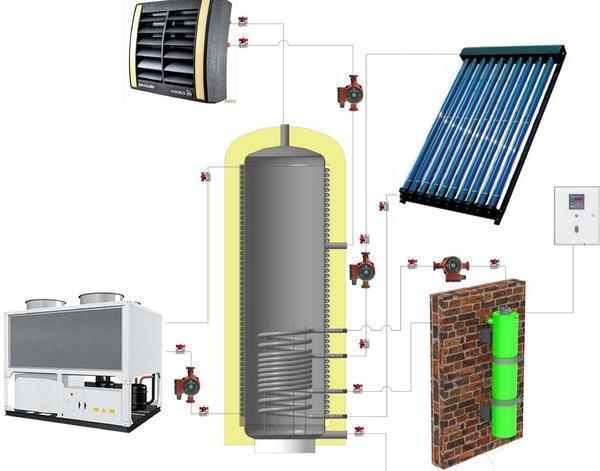

Heat Generator Mechanism: It is an electrical inductor composed of a primary, secondary and core. By converting electricity into eddy currents, the primary winding directs the electric field to the secondary winding, which in turn transfers energy to the carrier. Under the influence of the electromagnetic field, eddy currents are generated in the body and core. They heat up the metal. Water picks up heat from the core and distributes it throughout the building.
But what type of heating to choose for a country house, you will find out by reading the article on the next page:
The operation of an induction hob is based on the same principle. Such tiles are much more economical than conventional electric stoves. This is achieved by avoiding heat loss by transferring heat from the heater to the cookware. Marketers today designate induction heating boilers as advanced developments created on a new principle. But in fact, this is not entirely true. Inductive principles have been applied since the last century for smelting furnaces. Also, no new materials are used for the manufacture of boilers.
M. Faraday discovered the phenomenon of induction in 1831.
Induction options are safer than other heating boilers, they practically do not need maintenance. They do not contain dynamic parts and, as a result, have no mechanical wear. With sufficient cooling, the coil's lifespan is unlimited. Such boilers do not require a separate room. Compared to gas boilers, they practically do not need maintenance work.
Induction boiler advantages:
- Constant circulation of the coolant;
- Lack of heating elements;
- Silence.
An inductive electric boiler is able to heat not only the area of a small private house, but also industrial premises, while there is no need for large installation and maintenance costs. Induction heating boilers on the market are not cheap. The reason is in the sensors of the system. The inverter used in the control system increases the cost of the heating boiler.
Heating boilers for home have many characteristics. You can read more about this on the website:
Examples of designs of homemade options
Option # 1 - Plastic pipes + welding inverter
Having some knowledge in the field of physics and owning wire cutters, you can assemble an elementary induction model yourself.
To do this, you need to purchase a ready-made welding inverter, high-frequency, with a smooth current control and a power of 15 amperes, although it is better to choose a more powerful machine for heating.A stainless steel wire rod or just a piece of steel wire will work as a heating element. The length of the segments is about 50 mm, with a diameter of 7 mm.
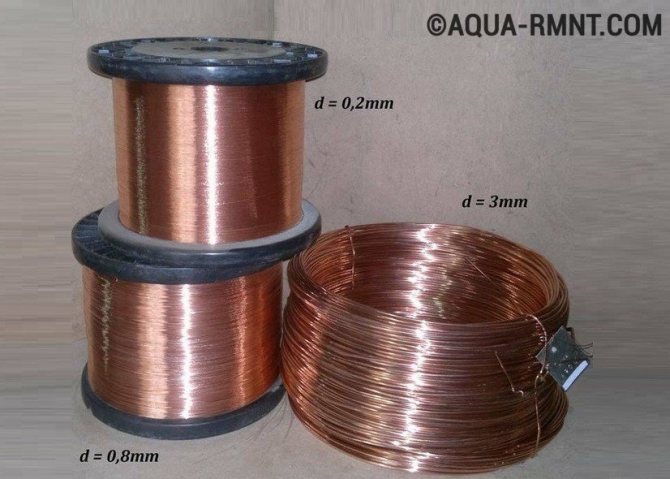

Copper wire can be purchased at the store. It is better not to use winding from old coils.
The body (the base of the induction coil) will be at the same time part of the pipeline, therefore a plastic pipe, necessarily with thick walls, the inner diameter of which is slightly less than 50 mm, is suitable for its manufacture. Two branch pipes are attached to the body for the supply of cold and return of the heated coolant.
The inner space is completely filled with pieces of wire, covered with a metal mesh at both ends so that they do not crumble. An induction coil is made in the following way: an enameled copper wire is carefully wound around the finished plastic pipe - about 90 turns.
The homemade device must be connected to the network. A section of the pipe is cut out of the installed pipeline, and a homemade induction boiler is placed in its place. It is connected to an inverter and water is started.
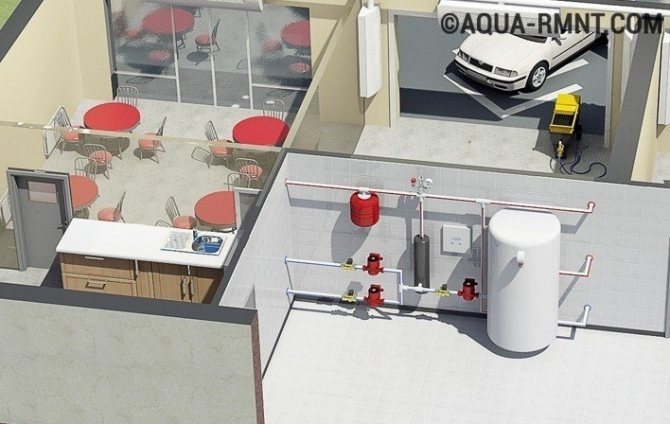

The induction heating boiler is located together with the rest of the equipment - in the boiler room
It is important to note that induction heating boilers work only if there is a coolant in the system; without it, the plastic body will melt.
Option # 2 - transformer design
For the manufacture of this unit, you will need a welding machine, as well as a transformer (three-phase) with the possibility of fixing.
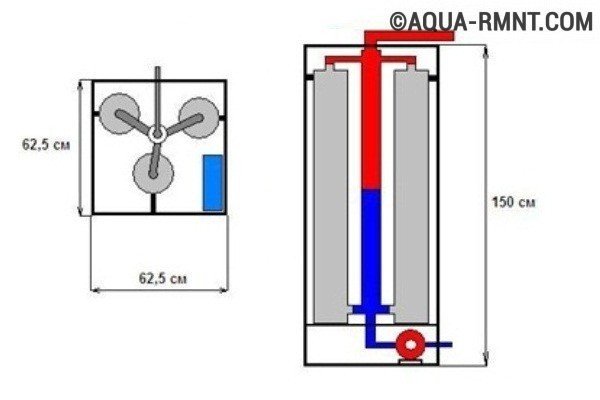

It is necessary to weld two pipes so that they look like a donut in section
This design performs both conductive and heating functions. Then the winding is wound, directly on the boiler body, so that it works more efficiently, despite its low weight and dimensions. The heating medium heating scheme is standard: it receives thermal energy in contact with the winding.
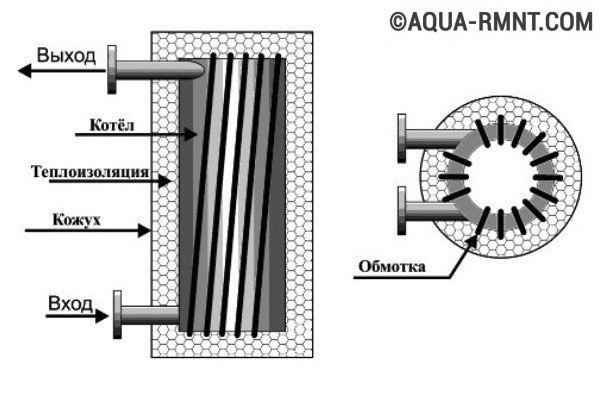

Like the simpler version, the complex model is equipped with two nozzles - for the inlet of the cold coolant and the outlet of the heated
The presence of a protective casing will help eliminate heat loss. You can also make the shroud yourself.
How to make an induction heating boiler with your own hands
Opponents of the installation of induction boilers cite the conservation law - 1 kW of electricity is able to generate heat energy also no more than 1 kW. Yes, any water heater, consuming 1 kW of electricity, also produces 1 kW of energy. But not all of it is warm. Induction water heaters are more productive in the production of thermal energy, in comparison with heating elements. Making a homemade inductive water heater is not difficult. The materials used in this case can be found without much difficulty and at a low price. The circuit for such an inductive device is quite simple.
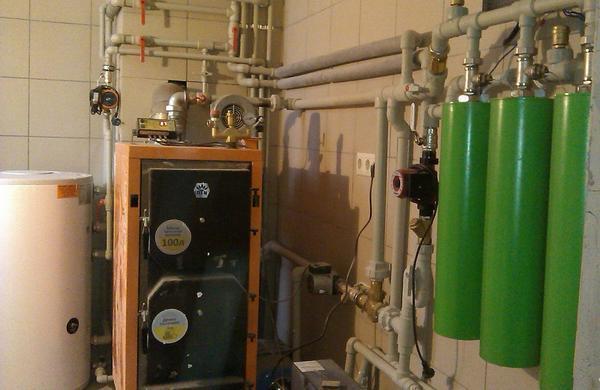

To convert electricity into heat, you need:
- Inductor;
- Alternating current 50 Hz;
- The core is made of a material to which the magnet "sticks";
- Drawings of an induction heating boiler (not a problem to find).
For the body of an induction boiler, you need to take a pipe with a diameter of 5 cm. The pipe is filled with pieces of wire, 5-7 cm, with a diameter of not more than 7 mm. To connect the boiler to the pipe system, you need adapters. The heating system diagram will help determine the characteristics.
It is better to install an automatic power off in case of a coolant leak. In this case, the electromagnetic field will not disappear if the power supply is not turned off, and the case with the fasteners will simply melt.
We make an induction coil - the main heating element. To do this, we take a copper wire, wrap it around the body, approximately 85-99 turns. The interval between the turns is kept equal. The simplest induction boiler is ready. Such an inductor can be installed anywhere in the pipeline.An induction steam generator works on the same principle.
Learn about the advantages and disadvantages of a double-circuit boiler in the following material:
Varieties of inverter heating boilers
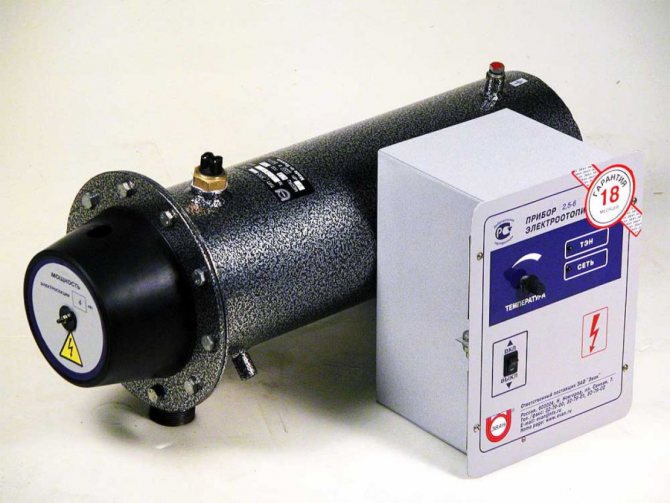

Electric double-circuit boiler for water supply and home heating
Inverter heating equipment is of two types - industrial and domestic. Industrial boilers have impressive dimensions, since there are volumetric heat exchangers inside. In addition, the system for converting electric current in them is quite complex. The same goes for cylindrical winding. All this provides a significant power of the device and the possibility of using it for industrial purposes and for heating rooms. When choosing a power, take into account that 1 kW of thermal energy is enough to heat 2 cubic meters of industrial premises.
Household inverter boilers are designed for heating private houses. They are equipped with a toroidal coil, which can be powered both from the public network and from uninterruptible power supplies. Household units are more compact and cheaper. To select a boiler in terms of power, the rule is that 1 kW of thermal energy is enough to heat a 10 m² room with a height of no more than three meters.
Induction heating modernization
Induction heating systems often have favorable reviews. Silence, efficiency and longevity are the indisputable advantages of the heating system. One of the varieties of the system is the operation of an induction water heater for heating. An induction water heater can be purchased and installed in the pipeline system.
You can pick up an induction heating scheme with your own hands. In this case, you can save your money well.
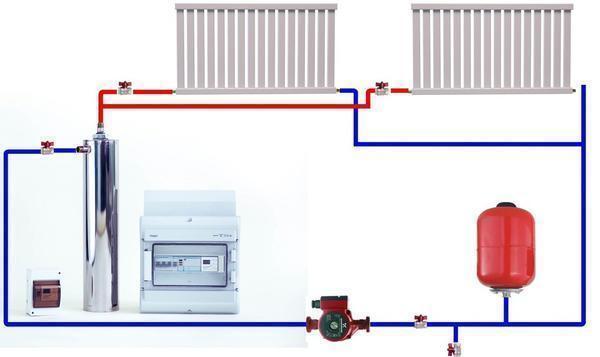

But, for more efficient operation of the induction system, it is important to know some of the nuances. By installing an induction cooker in the structure, it is connected to a charger, batteries and an inverter. An inverter is a device that converts direct current into alternating current. Its use reduces the amount of electricity consumed for the heating system to virtually zero.
For less energy consumption, you need:
- Inverter 4 kW;
- 2 batteries 250 A * h;
- Battery charger.
We connect 2 batteries synchronously, and charge them. They generate direct current and supply it to the inverter. The inverter converts DC to AC. The inverter then transfers current to the induction hob and the charging charges the batteries continuously. Thus, the consumption of the 24 V charger is the energy consumption of the induction heating of the house. The costs for the pump are calculated separately. Induction heaters are used only in versions with forced circulation.
Advantages and disadvantages
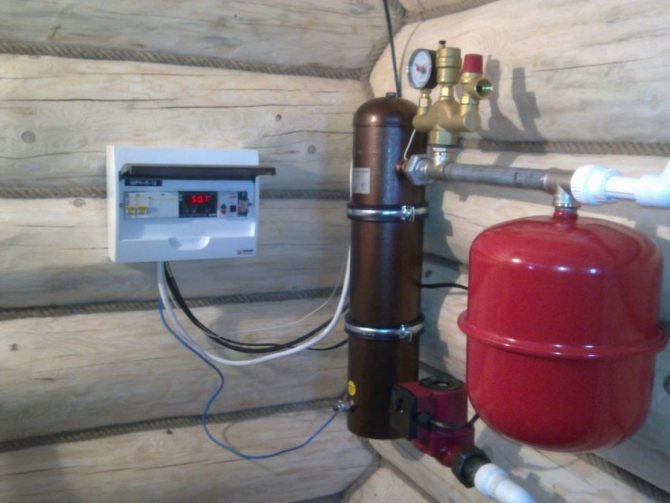

The positive qualities of inverter heating devices include the following:
- The unit can be operated with antifreeze or water. In this regard, it is significantly superior to electrode boilers, which can only work with liquids with good electrical conductivity (usually only with water), so antifreeze is not suitable.
- The advantage lies in the low inertness of heating. In other words, the device quickly heats the coolant to the required temperature. When using a centrifugal pump, the heating rate increases significantly. All this allows you to quickly and efficiently regulate the air temperature in the house.
- The impressive service life of the device is considered its main advantage. This is due to the fact that the induction coil does not come into contact with the heat transfer fluid, since it is well insulated. Boiler inverters, coil and automation have a large margin of safety.If untreated water is poured into the system, then over time, deposits may appear on the walls of the water tank, however, high demands are not made on the quality and purity of the coolant.
- There is no need to worry about coolant leaks, because the housing is very robust and airtight.
- If we compare the fire safety that a gas boiler has, the inverter unit is much safer in this regard.
- During operation, the inverter equipment does not make a lot of noise, and its efficiency reaches 100 percent.
- The device has compact dimensions, which cannot even be compared with gas and solid fuel units.
- If desired, an inverter-type heater can be made by hand.
- There is no need to allocate a separate room to install the equipment. Also, this does not require any approvals and permissions.
- Due to the lack of a combustion chamber, it is not necessary to install chimneys.
- The device does not require professional installation and can work up to 25 years without breakdowns.
Among the disadvantages is the greater weight in comparison with other models of electric boilers. With these parameters, the boiler output will be average. For this reason, they are not fixed to the wall, but only installed on the floor. The price of such a device is higher than that of its electric counterparts. These units can only work in closed heating systems.
To adjust the heating mode and control the operation of the device, sophisticated electronics are needed. The final price of inverter-type heating equipment depends on the cost of the control system. During operation of the unit, electromagnetic interference occurs that may affect the operation of other electronic equipment.
Description of inverter heating boiler
The inverter boiler has become available to the household consumer, in contrast to industrial enterprises, relatively recently. At the heart of the boiler device are 2 main cylinders placed in the outer one. The variant of such a boiler is safer. With proper installation, fire safety is orders of magnitude higher compared to gas, coal and wood-fired boilers.
The principle of operation of the inverter boiler:
- The coolant flows in the inner cylinder;
- The cylinder, which passes the current through itself, provides heating of the coolant;
- The outer cylinder acts as a heat insulator;
- The basis of the boiler operation is electromagnetic induction.
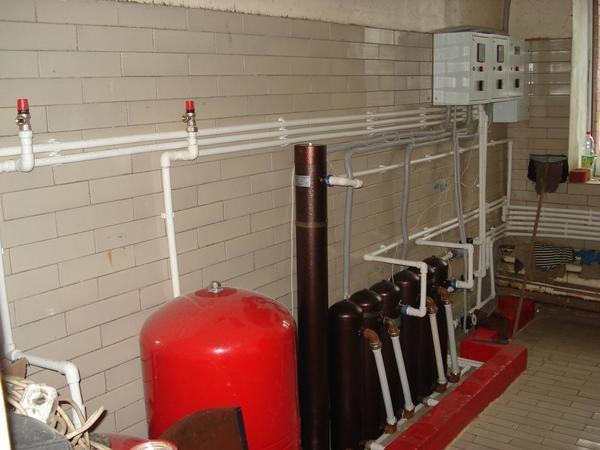

The mechanism of the inverter boiler practically eliminates the leakage of the coolant. An important quality is that any option can be used as a heat carrier (water, antifreeze, oil). The advantage of using antifreeze is that when the boiler is turned off in winter, the battery will not freeze or burst. Inverter boiler models of small capacity often have the ability to operate on battery power, which significantly reduces energy costs.
When installing an inverter boiler in a heating system, it is important to connect the ground correctly.
The inverter system will allow you to quickly reach the desired temperature, and will provide an economical consumption of electricity. Such systems are successfully used in the production of split-systems. The inverter air conditioner has a much longer service life than standard split systems.
Inverter heating at home, what and how it works
The heating system is one of the most important elements of any home, since it is impossible to talk about comfort in a cold home. Heating is especially important in cold climates. The choice of a heating system depends on many parameters, but the main ones are efficiency and economy. Heating is often used for half a year, and in some regions - for a whole year.
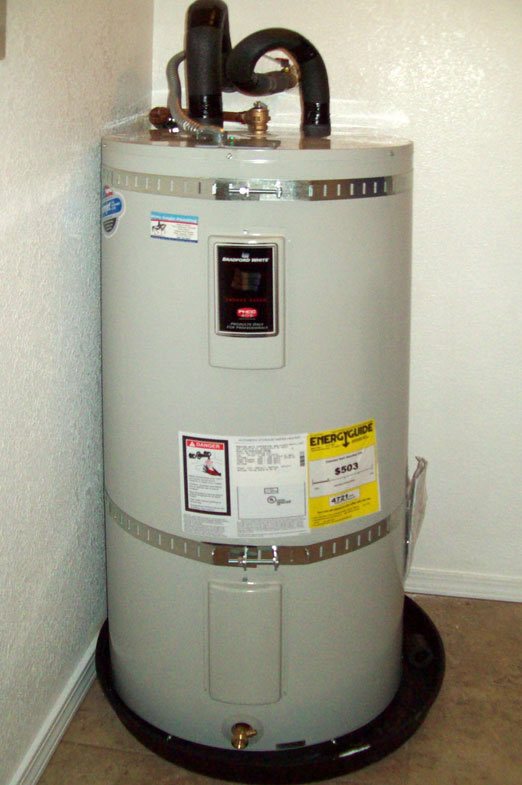

Against the background of many types of heating systems, inverter heating boilers stand out as a bright spot, which differ in a rather large number of parameters.Inverter heating belongs to the category of devices that use electricity to heat the house.
As a rule, most of the electric heating structures consume a fairly large amount of energy, so manufacturers are throwing every effort to increase the efficiency of these systems. This article will consider the principle of operation and features of inverter heating.
Inverter heating boiler design
In an inverter boiler, the heating agent is heated by converting electrical energy into heat. The boiler consists of two circuits: magnetic and heat exchange. A magnetic circuit is a coil of conductor attached to a dielectric. An electromagnetic field is created in this circuit, which acts on a metal core installed in the heat exchange circuit. It is the core that gives the received thermal energy to the coolant. Heating inverters are considered one of the most promising types of heating devices that can be used both for heating private houses and as a heater for industrial buildings.
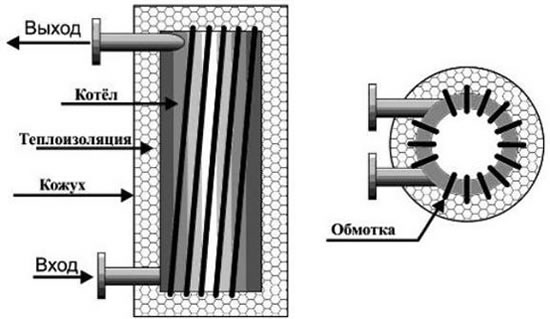

Advantages and disadvantages of inverter heating
Inverters in a broad sense are devices that convert direct current into alternating current, and their principle of operation is based on the phenomenon of electromagnetic induction. What is the difference between inverter heating and other types of heating systems?
The list of differences is pretty impressive:
- In the design of inverter boilers there are no moving parts and mechanisms, therefore, the durability of such devices is higher. Thus, the service life of inverter boilers is much higher than similar devices of another type and is usually at least 10 years.
- Inverter boilers have a fairly simple design, and if necessary, you can assemble it yourself.
- The heating medium in inverter boilers heats up much faster than in any other heating system. The reason is simple: in inverter devices there is no usual heat exchanger, so all the heat energy goes to heating the coolant.
- Almost every inverter boiler can work with any type of coolant, since the working elements of the boiler do not come into direct contact with the coolant. The coolant can only affect the characteristics and performance of the heating system, but the boiler will operate normally.
- Inverter boilers are quite expensive: when compared with ordinary household appliances, an inverter boiler will cost at least 2-3 times more.
- Household inverter boilers are heavy, but the dimensions of such devices compensate for this disadvantage. In addition, the successful shape allows such a structure to be located almost anywhere.
- The regulation of the boiler is carried out using complex electronic systems that will ensure continuous operation and control of the boiler parameters. Thus, despite the simplicity of assembling the boiler itself, in order to independently create the control elements, you will have to study electronics. The installation of electronic systems is mandatory, otherwise the equipment may be damaged and malfunctioned.
- Inverter heating devices do not create noise and belong to fire-safe devices: during operation, no fuel is used, due to which ignition can occur, and there are no moving elements.
- Such systems are environmentally friendly: since no fuel is used, there are no emissions into the environment, because there are no combustion products.
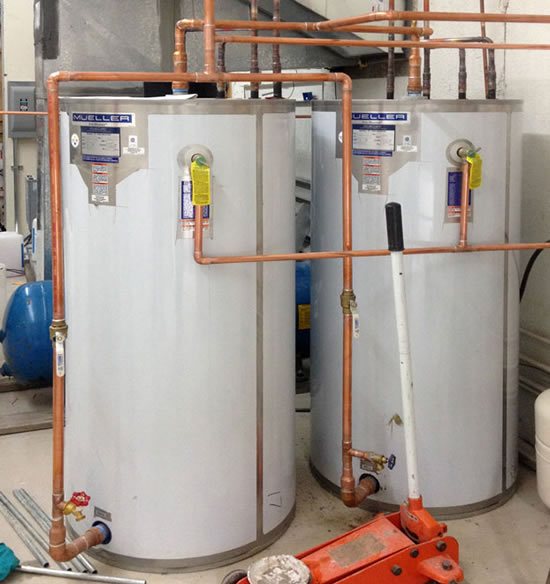

Do-it-yourself inverter boiler installation
When installing electrical equipment on your own, you must have some knowledge and skills, but their list is usually small. When all materials and tools are ready, you can start installing the heating system.Considering the possibility of a sudden power outage, it is necessary to take measures to protect the equipment from damage.
An excellent solution to this problem would be the purchase of inverter heating batteries, the cost of which is quite high, but in the future they can significantly save on heating the building.
The installation of inverter batteries makes it possible to minimize the possible risk of malfunctions during a power outage: the automation will switch the equipment to the backup power mode in 10 milliseconds, which will keep the operating temperature at the same level. When the electricity turns on, the reverse procedure will be carried out, and the boiler will operate normally. In this way, inverter heating at home minimizes the control of the system.
Autonomous power supplies
Often, for the normal operation of an electric heating system, it has to periodically switch to an alternative source of power, and batteries in this case will be much more convenient than generators. The explanation for this reason lies on the surface: generators are very dependent on the availability of fuel, which must be purchased, delivered, stored and refueled.
Batteries make it possible to exclude human actions, since all switching in this case will be carried out automatically. In addition, batteries are much better in terms of ecology and economics, despite their high cost.
Conclusion
Inverter heating is an excellent solution for heating your home. The acquisition and installation costs of such a design are usually quite high, but in the long term, these costs are offset by the good performance of such a system.
Second type of boiler
There are other ways to create such heating devices. Consider the second type of induction type boiler. It will cost more, but the result will please you even more.
The master must have more serious skills. Experience with welding is desirable. You will need a three-phase stationary inverter, additional tools.
This homemade induction boiler already includes two pipes. One is attached inside the other by welding. The device will perform two functions at once. On the one hand, this is the core - the source of the electromagnetic field, on the other - the heating element.
Copper wire is wrapped around the outer pipe. The result is high efficiency, compact dimensions and light weight of the device. Nozzles are used to supply the coolant.
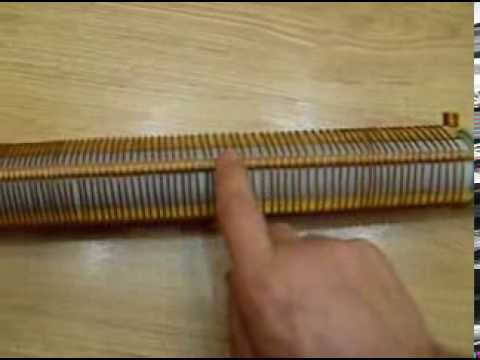

Outer tube winding
Principle of operation
The principle of operation of high-frequency induction boilers allows you to leave the previous room heating system unchanged. This will delight those who like to save money. After all, redoing the heating in a large house will definitely cost a pretty penny. And it took a long time. Do-it-yourself installation of an induction heating boiler does not take much time or money. It is available even to an inexperienced master.
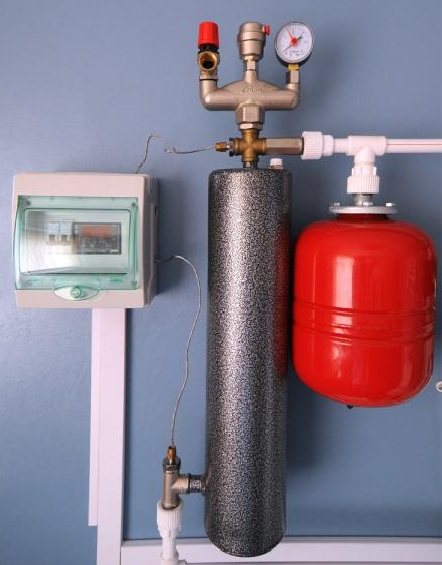

Induction boiler
Heating boiler from induction hob or panel
But for those who want to make an induction boiler, it is not at all necessary to assemble the heater on their own. All you need is to buy an induction cooker. It costs from $ 50 and more. Then there are the options:
- If there is a metal or cast iron radiator (aluminum is not suitable), you can simply lean the tile against the radiator and turn it on. The radiator begins to warm up, spreading heat throughout the room. In a room of 20 m2, tiles worked, set to 0.8 kW. At -20 ° C the room was + 25 ° C. It's not the most efficient way, but it's pretty good. And it's easy to check its work. Especially for those who have tiles.

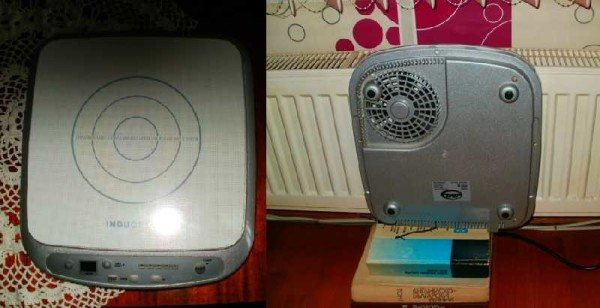
This is not to say that this is a boiler, but it heats the room well, and the electricity "pulls" a little
- The second simple option is to weld the "boiler" out of metal.Serve cold water on one side, take heated water on the other, put a circulation pump. The video below shows an example using an induction hob and two 5 mm thick metal containers.
Anyone can really make this version of a boiler from an induction cooker. Just once again we pay attention - in order for a liquid or a surface to heat up, the metal must be magnetic. Good stainless steel (non-magnetic) or aluminum are not suitable: Foucault currents do not propagate in them. In addition to the fact that there is almost no need to do anything, this option is good because there is a control and safety system on the tile that will turn off the device in case of overheating.
Read about Galan induction boilers and reviews about them.

